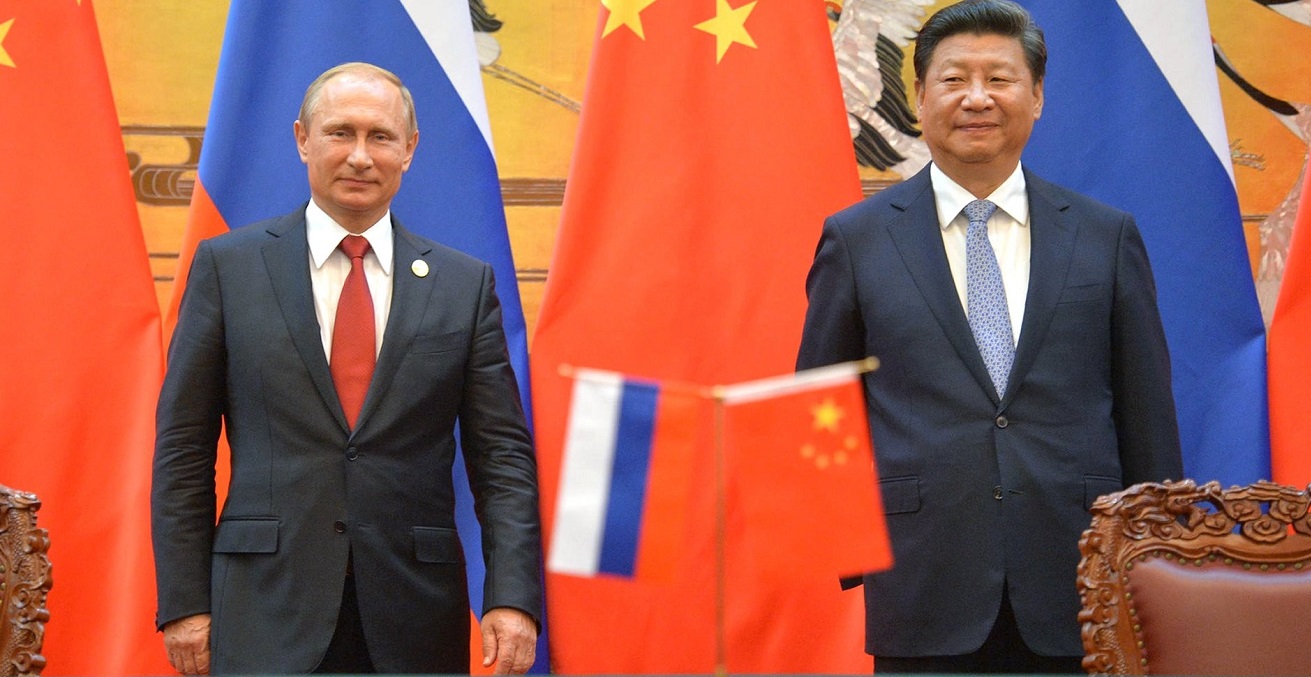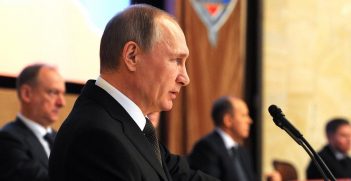Can Russia Fix the West’s China Problem?

An Australian MP has proposed that the US and other Western nations counter Chinese aggression by bringing Russia in from the cold. But doing so would create more problems than it might solve.
Liberal Party MP and former diplomat Dave Sharma has written a bold opinion piece suggesting that Australia and other Western states seek to contain China’s geopolitical ambitions by reaching out to Russia. He draws parallels between current US political upheavals and those of the late 1960s and early 1970s. Fifty years ago, a rising Soviet Union, like China today, was determined to take advantage of the US’s consequent diminished stature in the world to expand its own global authority
Sharma writes that US President Richard Nixon, who took office in 1969, worked with National Security Advisor Henry Kissinger to reach out to China. The aim was to make it a third party in the superpower standoff, thus forcing Moscow to divide its attention between two potential adversaries. Sharma’s suggestion is to reverse Nixon’s trick – bring Russia in from the cold to balance China.
There are many problems with this proposal. But, on a positive note, it’s pleasing to have a backbench MP of any stripe publish a considered contribution to Australia’s foreign policy debate – whether one agrees with their view or not. Another Liberal MP, Andrew Hastie, last year made a similarly thoughtful public contribution on China. Unfortunately, such interventions by parliamentarians are rare, and parliamentary debates on international issues still tend to focus on “gotcha” tactics. But one can hope.
Flawed analysis
That said, it’s disappointing that Sharma does not appear to have done much research before writing. His comparison with the Nixon-Kissinger foreign policy is flawed. In 1969, China represented a huge opportunity waiting to be grasped by the US and the West more broadly. The Cultural Revolution was over; the country’s de facto leader, Zhou Enlai, was emerging as someone other world leaders could work with; and US and Western businesses were salivating at the vast trade prospects starting to become apparent there.
So reaching out to China at that time had a rationale beyond Cold War security imperatives. The then-Australian Labor Party opposition leader, Gough Whitlam, saw the way the wind was blowing. Whitlam visited Beijing in July 1971 despite the fact that Australia recognised Taipei as China’s capital. His ground-breaking trip took place a few weeks before Kissinger’s secret mission to set up the Nixon visit in early 1972.
Kissinger, in his books Diplomacy and World Order, notes that Nixon saw the geopolitical potential of injecting China into the US-Soviet stand-off. But that did not mean making it an ally against Moscow – as Sharma suggests we could do with Russia vis-à-vis China now. The Sino-Soviet ideological split from the 1950s had disrupted ties between them, and even produced armed border clashes in the late 1960s. At the time of Kissinger’s 1971 visit to Beijing, the Soviets already had reason to watch their eastern flank.
Sharma does not mention that Nixon was also reaching out to the Soviet Union, as well as to China, from early in his presidency. The Nixon-Kissinger policy towards Beijing was rapprochement and towards Moscow, détente. Nixon’s bigger aim was to get the US out of Vietnam – “Peace with Honor” – and one of the major objectives of his China-Soviet outreach was to ensure they did not get in the way. Probably the high point of Nixon’s détente strategy was in mid-1973, with Soviet leader Brezhnev’s visit to Washington. The Economist magazine was highly sceptical of détente: its cover at the time had a photo of Nixon and Brezhnev toasting each other at the White House dinner with the caption, quoting from the children’s writer A. A. Milne, “Isn’t it funny how a bear likes honey?”.
Limits of détente
Détente didn’t last much longer. Its limitations became apparent later that year with serious tensions between Washington and Moscow over the 1973 Arab-Israeli war. Though both superpowers co-chaired the Geneva peace conference immediately after the war, within a year the US had shut Moscow out of the process in favour of Kissinger’s shuttle diplomacy between Middle East capitals. The US then managed by itself the Egyptian-Israeli negotiations that led to the 1978 Camp David Accords.
The souring of bilateral relations turned to acrimony after the Soviet invasion of Afghanistan in 1979. And nuclear war was only just averted when Moscow misread NATO military exercises in 1983 as the start of an actual attack on the Soviet Union.
Events since then have served to cement Moscow’s mistrust of the West in general, and the US in particular. After the dissolution of the Soviet Union in 1991, Russians expected major US aid to rebuild their bankrupt economy. Instead they got Chicago-school economists recommending radical privatisation measures that threw millions out of work and caused the rouble to plummet.
And despite what Russians claim were US promises not to expand NATO eastwards, by 2004 NATO’s membership included several former Warsaw Pact members and had reached Russia’s borders. Thoughtless Western comments about Russia’s reduced status humiliated the former superpower. President Obama’s reference to Russia as merely a regional power rankled particularly.
In this environment, President Putin’s appeal to Russian nationalism has gained a ready hearing among Russians and is one of the reasons for his remarkably high polling figures over his 20 years in power – despite his manipulation of elections and the kleptocratic nature of his government.
Policy U-turns
For Australia to urge other Western governments to implement Sharma’s suggestion would require us to abandon principled policy positions in relation to Russia. For Moscow even to consider alignment with the West, it would certainly demand that the West lift sanctions over Russia’s annexation of Crimea and cease the current legal process in The Hague over the 2014 destruction of MH17 that resulted in the deaths of 37 Australians. Russia would obviously demand also that Australia desist from critical comments, such as Foreign Minister Marise Payne’s accusing Moscow (as well as China) of disinformation campaigns this week. Neither Australia, nor any other Western state could accept this.
But why should Putin even consider Sharma’s proposal? When Putin’s predecessor, Boris Yeltsin, reached out to the West in the early 1990s, from the perspective of most Russians he got nothing in return. Given that precedent, Putin appears content to base his foreign policy on countering US global strategy, undercutting US objectives when he disagrees with them. Through its veto in the UN Security Council, Russia can prevent most international developments it opposes. Putin may not be liked, but his views cannot be dismissed.
A bonus for Putin is that Donald Trump is a gift that keeps on giving. The US president has just suggested that Russia be invited back into the G7 group of rich nations – from which it was expelled after annexing Crimea – even though Russia has done nothing to earn such a concession. Moreover, Putin has a stable relationship with Xi Jinping that works for both in geo-economic as well as geopolitical terms. Why should Putin exchange that for one with an unpredictable and apparently failing US?
Ian Parmeter worked for 37 years in the Department of Foreign Affairs and Trade, the Department of the Prime Minister and Cabinet, and the Office of National Assessments. He is currently a Research Scholar at the Centre for Arab and Islamic Studies, Australian National University.
This article is published under a Creative Commons Licence and may be republished with attribution.



